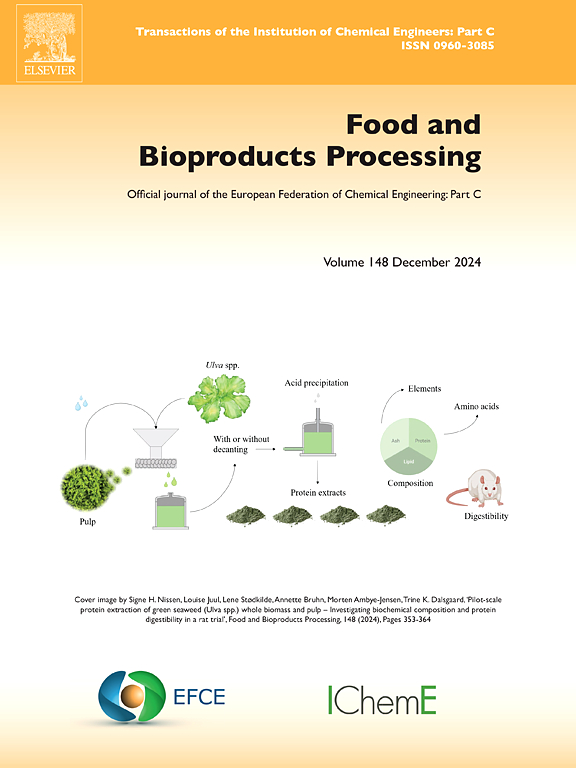Synthesis and characterization of fish gelatin hydrogels for enhanced biopolymer applications
IF 3.5
2区 农林科学
Q2 BIOTECHNOLOGY & APPLIED MICROBIOLOGY
引用次数: 0
Abstract
In this work, a novel fish gelatin (FG)-based hydrogel was synthesized, and various properties of the FG/Polyacrylamide (PAM) hydrogel were characterized including the properties of precursor, gelling process, mechanical and physical. With the FG mass ratio increased from 0 % to 10 %, the particle size of the solution increased from 0 nm to 673.67 nm, as well as the zeta potential shifted from negative (-1.57 mV) to positive (exceeds 11.0 mV). Moreover, the apparent viscosity of FG/Acrylamide (AAm) precursor solutions became more stable than that of the pure AAm solution. Eventually, during the gelling process, the gelation temperature of the FG/PAM hydrogel increased from 39.17°C to 64.19°C. The hydrogel exhibited over a 5-fold increase in compressive fatigue resistance at an 80 % strain level, with a maximum stress of 1.225 MPa (FG:AAm = 1.0:9.0) under various strain conditions. The microstructure of various FG/PAM hydrogels formed a spatially structured network and pores in the hydrogel. When FG content increased, the pores density became intensive and then loose. Additionally, the experiment results showed FG/PAM hydrogels exhibited excellent biodegradability. The findings of this study provide a foundation and promising prospect for further exploration and application of hydrogels incorporated with FG.
求助全文
约1分钟内获得全文
求助全文
来源期刊

Food and Bioproducts Processing
工程技术-工程:化工
CiteScore
9.70
自引率
4.30%
发文量
115
审稿时长
24 days
期刊介绍:
Official Journal of the European Federation of Chemical Engineering:
Part C
FBP aims to be the principal international journal for publication of high quality, original papers in the branches of engineering and science dedicated to the safe processing of biological products. It is the only journal to exploit the synergy between biotechnology, bioprocessing and food engineering.
Papers showing how research results can be used in engineering design, and accounts of experimental or theoretical research work bringing new perspectives to established principles, highlighting unsolved problems or indicating directions for future research, are particularly welcome. Contributions that deal with new developments in equipment or processes and that can be given quantitative expression are encouraged. The journal is especially interested in papers that extend the boundaries of food and bioproducts processing.
The journal has a strong emphasis on the interface between engineering and food or bioproducts. Papers that are not likely to be published are those:
• Primarily concerned with food formulation
• That use experimental design techniques to obtain response surfaces but gain little insight from them
• That are empirical and ignore established mechanistic models, e.g., empirical drying curves
• That are primarily concerned about sensory evaluation and colour
• Concern the extraction, encapsulation and/or antioxidant activity of a specific biological material without providing insight that could be applied to a similar but different material,
• Containing only chemical analyses of biological materials.
 求助内容:
求助内容: 应助结果提醒方式:
应助结果提醒方式:


